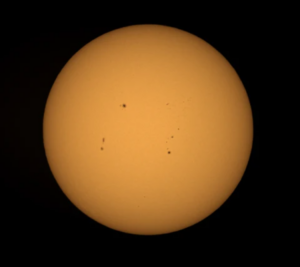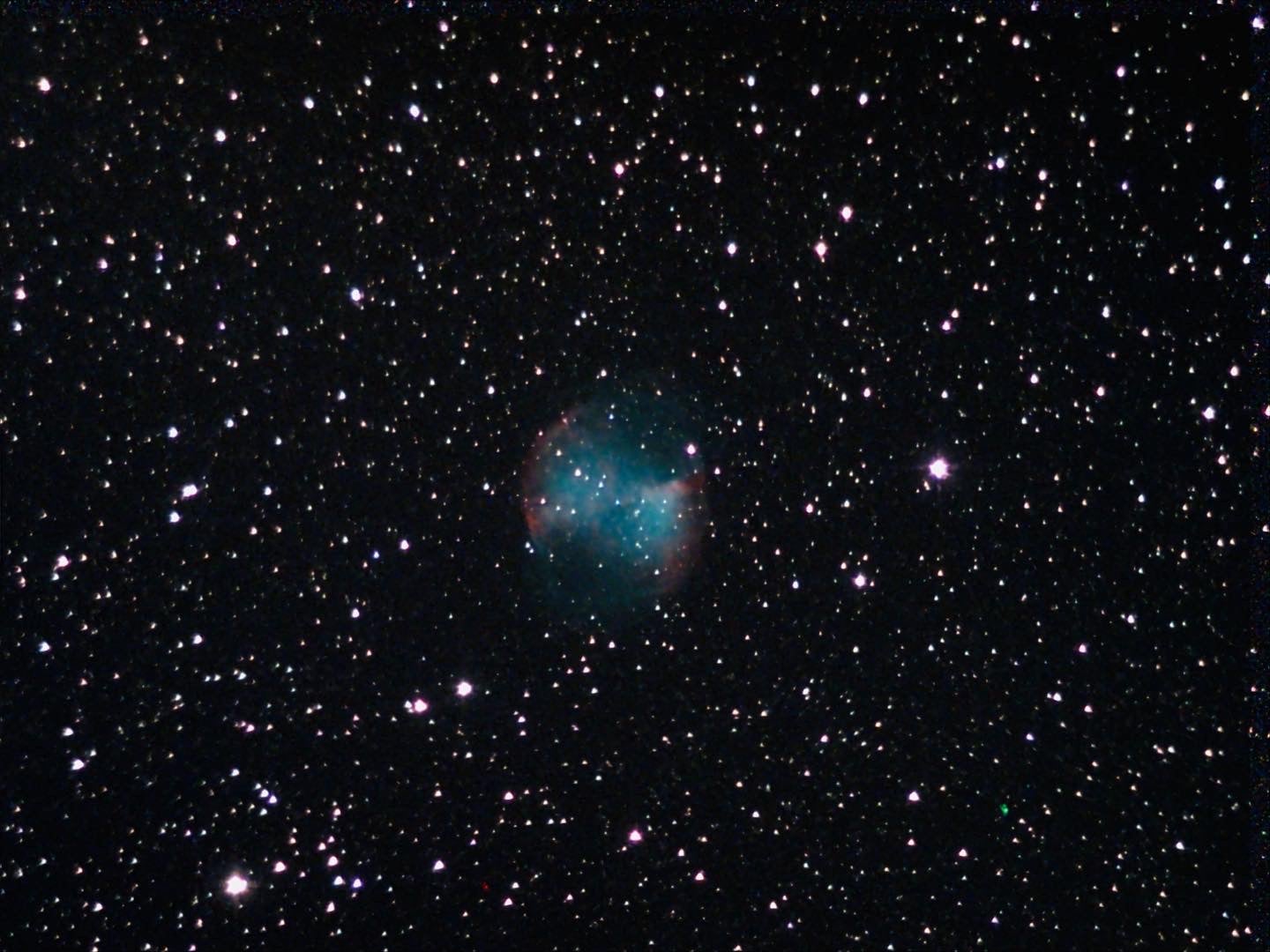In addition to planetarium shows and activities we also do observational events! All telescope events incorporate learning prevalent to the object(s) being observed.
Solar Observing
For younger groups and those not keen on waiting until dark we recommend our Coronado Solar Telescope. This is a special telescope designed to enable safe viewing of the sun’s surface. Having a solar observing day is a great activity because it doesn’t require anyone staying up past their bedtime! It can also be done at any location as long as there’s low cloud coverage.

The sun is fascinating to look at- especially right now! The sun is currently heading towards a solar maximum that’s expected to peak in 2025, meaning that there will be an increasing number of solar flares and dark spots visible.

Stargazing Events
If you’re interested in a nighttime event based around observational astronomy then you’ve come to the right place! We have a few observational nights under our belts with both children and adults, and all have been a hit.
AstroTAC also partners with the Boise Astronomical Society for observing, Boise’s local non-profit educational and scientific organization dedicated to all things astronomy. This partnership allows for more telescopes to be present at events and further connects our community.
These events work best where light pollution is minimal- check out our tips on planning for an observing night below.

Tips for planning on observing night
What is astronomical twilight?
Astronomical twilight refers to when the sun is 12-18 degrees below the horizon, allowing moderately faint stars or planets to be observed with the naked eye under a non light polluted sky. When planning an observing night, it’s best to start around astronomical twilight.
On average, astronomical twilight occurs about 1 to 1.5 hours after sunset.
Where is the moon?
The moon plays a huge role in determining what will be visible for observing! When the moon is full, it’s so bright that nearly all other objects in the night sky become invisible; because of this, it’s ideal to plan an observing night when the moon is in a phase that’s less than half.
The closer to a new moon, the better the viewing! If you’re curious what phase the moon is currently in, click here.
What is light pollution?
Light pollution is defined as the artificial illumination of the night sky, limiting visibility of faint stars or other celestial objects. This interactive light pollution map allows you to search for your location and see what the light pollution is like in your area- cooler colors such as blues are ideal!
It’s hard to find areas like the Central Idaho Dark Sky Reserve that are completely black, signifying a pristine dark sky. Don’t feel discouraged if your area has color on the map! There is still plenty of stargazing to be had.